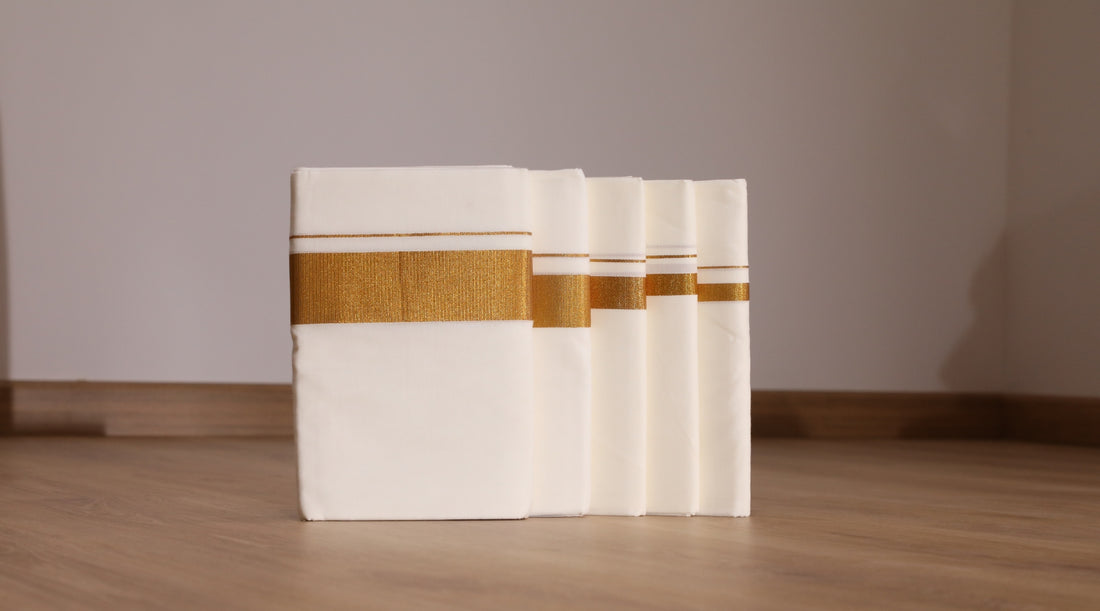Have you ever wondered what men used to wear underneath their dhotis? The answer may surprise you! Centuries ago, men did not wear anything underneath their dhotis, and women even roamed topless. However, as time passed, fashion and cultural norms evolved, leading to a transition from traditional dhotis to the introduction of boxers in India. In this blog post, we take a captivating journey through history, exploring the transformation of men's innerwear in India and the popularity of boxers in modern times.
The History of Dhotis: Let's start by exploring the origins of dhotis. During the Indus Valley Civilization, men embraced a unique garment known as the dhoti. This piece of clothing consisted of a 5-yard cloth wrapped around the waist, covering their legs. The dhoti, adorned with five knots, captivated historians with its beauty and cultural significance. Even today, dhotis continue to be worn, particularly during religious ceremonies, predominantly in shades of white and cream. It's fascinating to see the different variants of dhotis that exist across India.
Variants of Dhoti: In the southern regions of India, a similar garment called the lungi is prevalent. The lungi is a cloth draped around the waist, divided horizontally until it reaches the knee. However, in northern India, wearing a dhoti folded up to knee-length is considered disrespectful to the culture. It's remarkable how diverse the cultures within the same country can be. Regardless of the regional differences, dhotis remain a popular choice for the Indian weather, providing ventilation and a comfortable fit.
Innerwear Before the Introduction of Boxers in India: Before the arrival of boxers, another garment known as the langot was widely worn as innerwear in India. The langot, a rectangular piece of cloth, was wrapped around the hips and secured with four strings, providing minimal coverage. Pehelwaans, or wrestlers in India, still commonly wear langots to this day. It was only after the Mughal invasion that the concept of wearing innerwear became more prevalent in Indian society. The Mughals deemed it necessary for men and women to cover themselves, leading to the emergence of undergarments.
Introduction and Popularization of Boxers in India: The introduction of boxers in India can be attributed to the British during their colonial rule. British soldiers and citizens were required to wear boxer shorts with elastic bands. Initially, some soldiers protested this change and stuck to wearing langots. However, the convenience and comfort offered by boxers eventually won over the majority, leading to a widespread transition to modern underwear in India.
Interestingly, it was Bollywood that played a significant role in popularising boxers across the country. Fashion trends showcased in movies captivated the audience, generating interest and curiosity about boxers. Bollywood stars flaunting their fit bodies in boxers or revealing the waistbands of their underwear became a trendsetter. This period witnessed a surge in the adoption of boxers among the Indian population.
Embrace the Quirkiness: Today, boxers come in a wide range of designs and prints, allowing individuals to express their unique style. Whether it's leopard prints or galaxy-themed patterns, you can find boxers that resonate with your personality. Embrace the quirkiness and upgrade your underwear collection with Whats Down, offering a variety of fun and stylish boxers that will make you stand out from the crowd.
The transition from dhotis to boxers in India is a fascinating journey that reflects the evolution of fashion and cultural norms. From the simplicity of dhotis to the comfort and convenience of boxers, Indian men have embraced a new era of innerwear. We should appreciate the existence of boxers, as they have replaced the absence of inner garments, creating a more aesthetically pleasing sight. So, go ahead, explore the vibrant world of boxers, and make a style statement that sets you apart from the men of the Indus Valley Civilisation!

